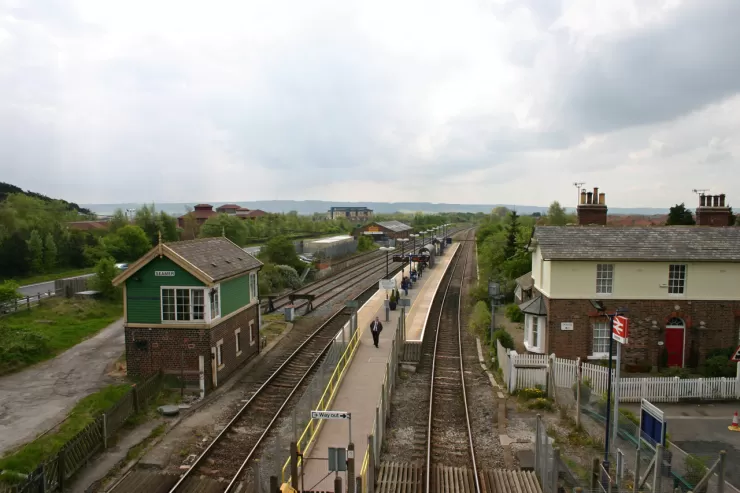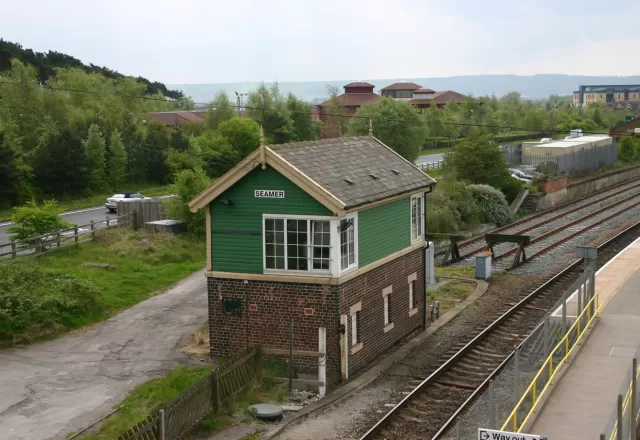Seamer Station
Compare a map of Seamer Station from a hundred years ago and the scene is very different to what it is today. Bar a few nearby farms, the only buildings were those related to the railway. The station itself was about a mile away from the original village of Seamer. Today there is a mass of housing and industrial estates forming Crossgates and Eastfield, names which have been inherited from single dwellings which stood in open countryside.
1845
Opened on 8th July 1845 with the rest of the York to Scarborough line. Seamer station had an island platform for the main line from York. The booking office was incorporated into the Station Masters house adjacent to the level crossing on Station Road.
1911
In 1911 the station layout was modified with a new down slow Line and platform for Forge Valley traffic to clear the main running lines for express workings. Also provided was a standard North Eastern design footbridge to gain access to the Forge Valley platform from the island platform. After the Forge Valley Line closed, the down slow line was removed shortly afterwards.
Seamer had a unique feature of two signal boxes side by side. The signal box set back was the original York & North Midland structure. In 1911, when the down slow line was introduced, this signal box was closed and a new one opened to accommodate for the extra signalling and pointwork.
Seamer is now very much a shadow of its former-self, but is one of the few intermediate stations which remain open on the York to Scarborough mainline. The branch from Bridlington still remains, maintaining Seamer's junction status. The 1911 Seamer East signal box still stands and with the closure of Falsgrave Signal Box, now controls all of Scarborough's point work and signalling. By 1994 the original signal box was in a derelict state, having been out of use for over 80 years and was demolished. All the buildings in the goods yard survived into the late 1970's, although the yard itself had closed in the early 1960's.

